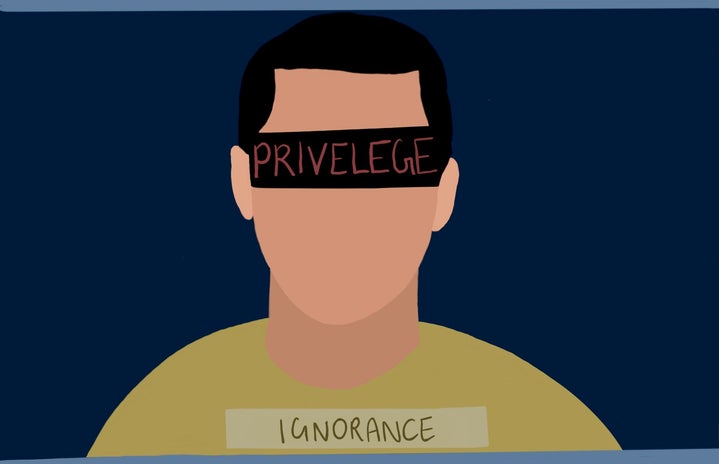Edited By : Devanganna Jain
Disclaimer : The observations and thoughts in this article come from a position of privilege (in terms of caste) and are not intended to speak FOR people belonging to Scheduled Castes (SCs), Scheduled Tribes (STs) and Other Backward Classes (OBCs)
TW : Mention of Suicide
If you are an Indian who is reading this from the Her Campus forum, you are most likely aware that discrimination on the basis of caste has been abolished as per the Constitution. However, it is common knowledge that casteism is alive and thriving in most spaces, including in “educated” and “liberal” institutes. Educated people love to say that casteism doesn’t exist but criticize reservation in the same breath. In my opinion, this is what happens when internalized biases are combined with a lack of understanding of how affirmative action works.
It is important to note that untouchability is not the only way in which casteism works. If you read the news, you might have seen articles about helpers, delivery services workers, plumbers and physical laborers not being allowed to use the same elevators as the residents in a high rise apartment complex in a posh neighborhood. One might argue that this is classism and not casteism, but it is as much casteist as it is classist. If this statement seems inaccurate, think about which caste groups are most likely to be relegated to doing manual labor. Numerous online sources delve deeper into this topic than I can. I’m eager to discuss, perhaps vent, about the prevalent anti-reservation rhetoric and challenge the notion of pure meritocracy.
Reservation is the favorite weapon of “caste-blind” people in this country, used to attack those from marginalized communities in institutions of higher education. After the recent suicides of Dalit students from certain IITs (Indian Institute of Technology), the myth of casteism not existing in premier institutions has been debunked. It has been reported that students in IITs get singled out and treated differently after their ranks have been found. But this is just the IITs. Similar situations happen elsewhere too. Underlying all these occurrences are the ideas of “merit” and “intelligence”, which are interrelated to each other. It is widely believed that to get admitted into prestigious institutions for higher education, one should get in through merit, which is determined by intelligence. Those who oppose the system of reservation believe that it undermines the importance of intelligence and, therefore, shouldn’t exist. One aspect such people do not really understand is the concept of intelligence. Intelligence is not limited to a person’s cognitive abilities but also includes other dimensions such as language usage, spatial awareness, understanding emotions, thoughts and feelings, and so on. This has been studied and propounded by the American psychologist Howard Gardner. Another feature of intelligence is that it is dependent on both nature and nurture. In other words, intelligence; whether it is related to cognitive abilities or not, is not just an inborn feature but is also shaped by the environment one grows up in. There are a variety of factors that impact one’s “intelligence”, like their access to clean water, sanitation, living conditions, parenting and access to resources. If we are to deem students who get into institutions of higher education through reservation as “less capable”, we are doing them a disservice and pushing the blame entirely on them. Their experiences with discrimination and marginalization outside of the educational space also affect them to a large extent. This kind of categorisation of SCs, STs and OBCs ignores the fact that a major reason why a lot of them are still stuck in poverty is due to systemic reasons. If, despite all of this, a marginalized student gets into an institution of higher education, especially a premier one, they have to face other battles once they are in the institution.
Institutionalized casteism is a reality that plagues elite institutions in our country and no amount of denial will make it disappear. There have been many instances of students from these communities being denied facilities and opportunities that their more privileged counterparts are given. Caste-based discrimination is a major catalyst for a variety of avoidable tragedies, such as student drop-outs and suicides. The suicide of Darshan Solanki, a first year chemical engineering student at IIT Bombay, is one such event that occurred in recent times. Solanki, like many other SC/ST/OBC students studying in elite institutions, was subjected to microaggressions in the form of quota jokes and jokes about his background from other students. He was singled out because of his caste identity, had to undergo segregation practices in residential facilities and was taunted because he was not proficient with technology. The response by IIT Bombay shows the lack of empathy and the ingrained attitudes regarding caste that is prevalent in the elite educational institutions of India. It brings to light the unfortunate truth that these institutions do not provide an environment conducive to learning for marginalized students.
People claim that marginalized students find it difficult to keep up with the coursework of premier institutions and, hence, find it difficult to fit in there.This was the same argument that was used against racial mixing of children in American schools (you can guess which group was on what side of this argument) I have personally heard an argument that reservation policies are useless because of this reason. At the time, I was infuriated and could not think of a proper counter argument. However, today, I would like to use the argument made by a teaching fellow- without reservation, marginalized students wouldn’t even be able to attend the institution. Furthermore, I believe that colleges and universities have the duty to provide learning support and opportunities to all kinds of students and shouldn’t just focus on the welfare of the “meritorious” ones. Universities and colleges need to have some diversity in terms of students and student body. They shouldn’t be places of homogeneity.
This article was meant to demonstrate my personal knowledge about this situation. It is not possible to show the full extent of casteism through this writeup so I would recommend reading about it online and reading books by Dalit/Bahujan/indigenous people. One book that I would recommend is ‘The Annihilation of Caste’ by Dr. Bhim Rao Ambedkar. It is an old book, but I believe it gives an informative perspective on how casteism works. In addition, there is a documentary by K. Stalin, titled ‘India Untouched: Stories of a People Apart’ that talks about untouchability. While it is an old documentary, its contents are still relevant. There are a variety of other resources but these can be a great starting point. Educating oneself about casteism is the best way to combat it. Casteism is a reality even in educated spaces and denying it despite the evidence available only exposes biases and wilful ignorance. Discussions about this subject can be uncomfortable initially, but this discomfort is the only way to begin allyship. We need to be allies if we are to ensure a more equitable future.


